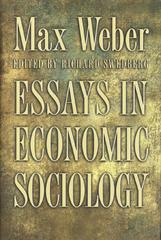. Provide solutions to the given questions.
Exercise 3 (37 marks: 3 + 6 + 24 + 4) Refer to Exercise 2. (a) Using the subset() functions, divide the original data frame into two parts by the Book variable and denote the dataframe for the films based on books published before the release of the movie as y and the dataframe for the other films as n. Show a screenshot of your Environment tab. (b) Estimate the Earnings, = B + 8, Production, + 8, Promotion, + E, multiple linear regression model twice, first for the films that were based on books published before the release of the movie and then for the films that were not based on books published before the release of the movie. Write out the sample regression equations using the actual variable names. (c) For both of your regressions, i. Interpret the adjusted coefficient of determination. Is the model likely to be useful in predicting the gross earnings generated by movies? Explain your answer. ii. Test the overall significance of the model at the 1% significance level. What are the hypotheses, the statistical decision, and the conclusion? Be precise. 5 iii. Based on your expectations in part (b) of Exercise 2, test appropriate hypotheses concerning the slope coefficients using f-tests at the 5% significance level. What are your decisions and conclusions? iv. Interpret the slope coefficients that you deemed significant in the expected direction. (d) What do your two regressions suggest to you about the gross eamings generated by films that are based on books published before the release of the movie and by films that are not based on books published before the release of the movie movies? (Hint. compare the corresponding slope estimate to each other.)where Y is the total amount of output, A is the total amount of capital, and N is the total labor input, including the adjustment for labor-augmenting techno- logical change. That is, if n is the labor input supplied by the representative household and g is the rate of labor-augmenting technological change, then N= ne". With these conventions, we can write the production function as y = f(k, n). (7) where y = 1/e" is output per efficiency unit and k = Kest is capital per efficiency unit. Note that we no longer assume that the production function f (k, n) is Cobb-Douglas. We will let a denote the capital share and { denote the elasticity of substitution between capital and labor. Given competitive markets, firms earn zero profits and capital earns a before- tax rate of return r equal to its marginal product: r = f*( k,n). (8) Each efficiency unit of labor is paid a wage w equal to its marginal product, w = fn( k, n). (9) Below, in Section 4, we consider generalizations to non-competitive production settings. 2.2 Households We use a conventional, infinitely-lived representative household. The house- hold's instantaneous utility function takes the isoelastic form with curvature parameter y. To incorporate elastic labor supply, we add labor n to the house- hold's utility function. This labor variable should be intrepreted broadly to include both time and effort. The household's utility function is U= e-m (ce)1-7 (1-)(m) - 1 1-7 where v(n) is a differentiable function of labor supply and all other variables are defined as before. This functional form was introduced by King, Ploaser, and Rebelo (1988) and has been more recently explored by Kimball and Shapiro (2003). We can write the household's dynamic budget constraint in per efficiency unit terms: k= (1 - T)wn+ (1 -Tx)rk - c- gk+I, lim kertalt = 0.Part II: Solve each problem in the space provided. Be sure to WRITE CLEARLY and SHOW YOUR WORK. (70 points total, each worth 14 points) Problem 1: Median household income (in thousands of dollars) for each of the past 5 years are shown in the following table. Year t Median Income Yt 1 $25 $30 AWN $27 $32 $35 a. Use a two-year moving average to forecast median household income for years 3, 4, and 5. (7 points) Median Household income for cack of are part s years b. Use exponential smoothing with an alpha of 0.4 to forecast median household income for years 2, 3, 4, and 5. (7 points) F+ + 1 = ATE TCI - a)FE $1+1 = 250 7 ( 1 -a )(15 pts.) Christina enjoys her expresso with chocolate. She always consumes 4 pieces of chocolate with 2 cups of coffee. a) (4 pts.) Using x1 to represents pieces of chocolate and x2 to represents shots of expresso, write down the Christina's utility function. b) (6 pts.) Christina spend $100 per week on her choice. When price of a piece of chocolate is $1 and price of a cup of coffee is $4, how many cups of coffee and pieces of chocolate will she consume? c) (5 pts.) Graph Christina's optimal choice. Your graph should include: the budget line, the indifference curve and the optimal consumption point










